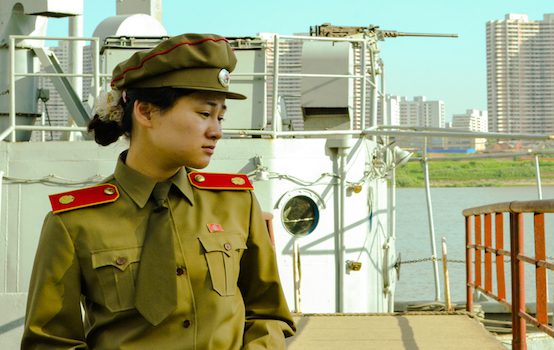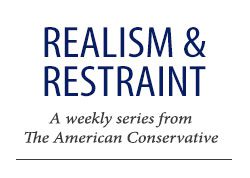Forget War: Containment is the Best Way to Deal With North Korea

What happens when the Trump administration discovers what is painfully apparent to many Asia hands around the world: that North Korea has no intention of giving up its nuclear weapons? Ever?
 To me this is as obvious as the sky being blue or one plus one equaling two, but the administration, for whatever reason, seems to believe otherwise.
To me this is as obvious as the sky being blue or one plus one equaling two, but the administration, for whatever reason, seems to believe otherwise.
Their strategy on North Korea, to put it bluntly, is just a rehash of what every other administration has done in the past, albeit with much more fanfare thanks to a summit that never should have happened in the first place.
Through a combination of incentives, reassurances, and slow negotiating over months—if not years—Team Trump hopes to find the right mix of economic, diplomatic, and geopolitical carrots to show Chairman Kim Jong-un that he can join the international community and thrive for decades to come in a secure East Asia. The price for such prosperity is the surrender of North Korea’s nukes.
But history tells Kim he should proceed with caution—and never, ever give up his atomic insurance policy.
North Korea’s diplomats are keen students of the recent past. In countless press statements, they make it clear that they know America has launched attacks against only nations without atomic arms. They also are aware that while President Trump might want a fresh start with Pyongyang, that does not mean a President Warren, Biden, or even Pence down the road will honor such an agreement.
Indeed, North Korea has not agreed to give up its nuclear weapons—even after being granted the ultimate legitimizing action anyone could have bestowed upon a rogue regime: a summit that will be remembered for the ages. As The Atlantic’s Uri Friedman points out, all the Kim regime agreed to in Singapore was to “work toward” the “complete denuclearization of the Korean Peninsula.” Such a pledge is not even aspirational; it’s nearly fictional.
What will happen now is clear. North Korea will do what it always does: drag out the terms of negotiations for months, if not years. We will likely never get to the point of even talking about nuclear or missile disarmament. The north will blame America and its “hostile policy”: we are imperialists, warmongers, we want to enact regime change—substitute whatever North Korean propaganda point you like. However long that process takes—and this is the key point—Pyongyang will have more missiles and nuclear weapons than it did in the past, and maybe a fully working ICBM that can hit the U.S. homeland.
This is where everything gets hard—and fast. The Trump administration will have to make a choice when it comes to North Korea. And there are only three choices to make. All have potential risks, but only one—containment—is clearly in America’s national interest and offers a realist approach that can keep us safe. First, though, let’s review the other two.
Option One: War and regime change
You saw this one coming, right? There will be voices on the right that, once it’s crystal clear that North Korea won’t give up its nuclear weapons, will demand a military strike to “take out” Kim’s nuclear weapons, missiles, and atomic production facilities.
There are many, many problems with this. The biggest of them is that with Kim having as many as 60 nuclear warheads and over 1,000 missiles, even the mighty U.S. Air Force would be unable to destroy them all—assuming they even know where they are—without North Korea launching a devastating counter-attack. The north would likely use whatever weapons it had left, and that would mean nuclear, chemical, and biological strikes on targets across South Korea, Japan, and U.S. bases in the Pacific.
In such a scenario millions of people would die. We can only hope the Trump administration would rule out such an option fast. But would it?
Option Two: Accept North Korea as a nuclear state and move on
In a world where domestic political considerations aren’t a constraint, this wouldn’t be the worst of options. Alas, this is Washington, and depoliticized negotiations with North Korea are a fairytale.
In this scenario, the Trump administration decides that it has no way to roll back what Kim has already created and tries to work around it.
That would involve Team Trump accepting North Korea as a nuclear power, but asking for some things in return. For example, the administration could move to an arms control approach, seeking to limit Kim’s quantities of warheads, missile systems, and launchers capable of attacking U.S. allies and the homeland, and strike verification agreements to enforce such limits. The DPRK would in exchange get a peace treaty ending the Korean War, diplomatic recognition by the United States and its partners and allies, and the lifting of economic sanctions. America would not get rid of Kim’s nukes, but the problem would be managed, allowing Washington to focus on other bigger geopolitical challenges—like the rise of China.
I’ll be honest: I don’t hate such a grand bargain, especially if it allows the administration to focus on what will likely be the decades-long challenge of dealing with Beijing’s aspirations to dominate Asia.
However, can you see any president ever just outright accepting a nuclear North Korea after the rhetoric of 2017? Critics on the left and right would hammer President Trump, and the attacks would only get fiercer as we got closer to the 2020 election cycle.
Option Three: Contain and deter North Korea indefinitely
Thinking through the above two options, we are left with the obvious choice.
After six months or more of negotiations, I would argue that the administration will settle on a policy of containing and deterring Pyongyang, a policy that might remain in place for decades to come.
That means Washington would continue with the maximum pressure strategy of tough economic sanctions along with diplomatic isolation. The goal would be to restrict the amount of outside revenue Pyongyang could use to develop ever-more advanced nuclear weapons and limit North Korea’s ability to build larger stockpiles of atomic warheads. This is very much a worthy goal, considering that the north can build a nuclear weapon every six to seven weeks, according to reports.
But we should also be clear that this is an imperfect strategy. The way America has economically contained North Korea has a clear weakness: it is entirely dependent on China. With 90 percent of North Korea’s external trade going through Beijing, any economic isolation of the Kim regime would be dependent on China’s acceptance of such a plan. And considering the budding U.S.-China trade war, President Xi might not exactly be inclined to help Trump—in fact, in tariff negotiations he could even use North Korea as his trump card, no pun intended.
Still, all things considered, a containment and deterrence strategy—especially if Washington and Beijing declare a trade truce, which seems very possible considering the economic stakes involved—offers America the best chance to rein in North Korea’s nuclear ambitions. While it’s possible that North Korea could give up its nuclear weapons, there is no evidence, at least so far, that Kim is ready to make such a leap.
As one of the preeminent Pyongyang watchers declared not long ago, North Korea is the land of lousy options. But if containment and deterrence worked during the Cold War when the stakes were much higher, they can work on the Kim regime, too.
Harry J. Kazianis (@grecianformula) is director of defense studies at the Center for the National Interest and executive editor of its publishing arm The National Interest. Previously, he led the foreign policy communications efforts of the Heritage Foundation, and served as editor-in-chief of The Diplomat and as a fellow at CSIS:PACNET. The views expressed are his own.
Comments